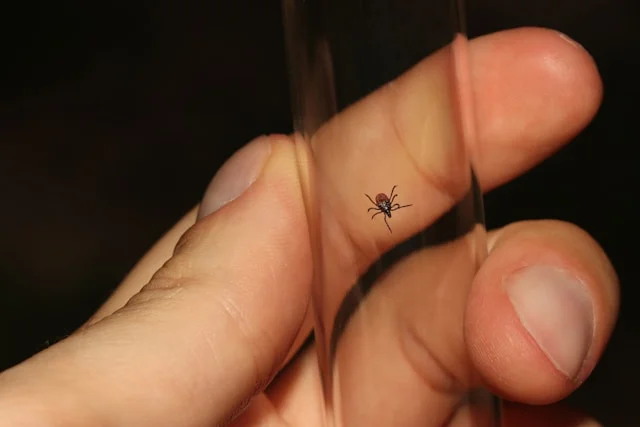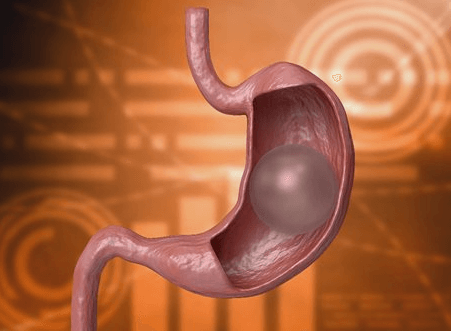Six Early Signs of Lyme Disease & 5 Actions to Take

If Lyme disease, which is spread by tick bites, is not treated, it can result in major health problems. Early detection of Lyme disease is essential for a timely diagnosis and course of treatment. We’ll look at six early indicators of Lyme disease in this post, ranging from the recognizable bull’s-eye rash to flu-like symptoms and neurological indications. We’ll also go over five crucial steps you should take if you think you may have Lyme disease.
Contents
Early Signs of Lyme Disease
Early symptoms of Lyme disease require prompt identification. The bull’s-eye rash is one important symptom. Along with a fever, headache, and fatigue, you may also feel like you have the flu. Joint edema and discomfort are also typical. Your nerves may occasionally feel weird, tingling or numbing. Other symptoms include constant fatigue and muscle aches. Your heart may occasionally be impacted, leading to palpitations and chest pain. Awareness of these symptoms aids in early detection of Lyme disease. Here are some of the symptoms you should look out for, if you suspect you have Lyme disease.
Bull’s-Eye Rash
People usually get a rash that looks like a bull’s-eye when they have Lyme disease. This rash has a red circle around it and you can often see where the tick bit you. Getting this rash doesn’t happen to everyone with Lyme disease, but if one gets it, one should not ignore it. At times, the rash differs in size, and might also feel warm or cause an itching sensation. If you see this rash on your body, you need to visit the doctor immediately because early treatment can prevent Lyme disease from becoming more severe.
Flu-Like Symptoms
Lyme disease is known to cause symptoms similar to the flu. You may develop a fever, feel cold or sweaty, and experience headaches. You may have feelings of exhaustion and a lack of energy on occasion. These symptoms can linger longer than a usual flu. It’s critical to recognize and not dismiss these symptoms, especially if you’ve been in locations where ticks reside. If you experience these symptoms and suspect you have Lyme disease, visit a doctor. Early treatment can make you feel better sooner.
Joint Pain and Swelling
Lyme disease can cause joint pain and swelling. The sensation felt by the patient is similar to arthritis, when your joints become tight and painful. Walking or moving can be difficult in this situation. Sometimes the discomfort shifts from one joint to another. Knees, elbows, and shoulders are among the most commonly affected joints. The pain normally begins gradually and worsens with time. If your joints hurt and you have been in tick-infested areas, you should see a doctor. Treatment can help reduce pain and edema.
Neurological Symptoms
Numbness and tingling are two of the strange feelings that can be caused by Lyme disease. This results from bacteria’s effect on your nerves. There is also a possibility that your face will feel strange, and the muscles in your face may briefly stop working. It’s possible that you’ll have trouble recalling things or thinking in a coherent manner. Even though these symptoms may be worrisome, it is important to disclose them to a medical professional. Treatment can help these symptoms resolve and prevent more significant issues.
Fatigue and Muscle Aches
Lyme disease is associated with chronic fatigue and painful muscles. Even if you relax, you may still be fatigued. Your muscles may ache, making it difficult to perform daily activities. This feeling in some muscles can continue for a while, making it difficult to enjoy regular activities. If you’re constantly exhausted and your muscles suffer, especially after being in tick-infested areas, you should see a doctor. Treatment can make you feel healthier and more energetic.
Cardiac Symptoms
Lyme disease can cause damage to your heart. Possible symptoms include a rapid or irregular heartbeat. A tightness may be felt in your chest. You may find it difficult to take deep breaths. If you experience these sensations, then inform a physician about them. Treatment has the potential to alleviate these symptoms and prevent more serious cardiac problems in the future. Make sure you pay great attention to the condition of your heart. Try to get assistance if there are any changes.
Actions to Take
Take prompt action if you have any suspicions that you may be suffering from Lyme disease. Seek medical attention first. Experts will be able to assist you in determining whether or not you have Lyme disease and the treatment that you need to receive. Share with them any experiences you’ve had with ticks, including any outdoor activities you’ve participated in and any locations you’ve visited where ticks can be found. Early treatment with antibiotics can help you recover from your illness more quickly.
Seek Medical Evaluation
If you suspect Lyme disease, consult a doctor as soon as possible. They will assess your symptoms and may conduct tests to confirm the diagnosis. A quick medical evaluation is required to begin therapy as soon as possible. The doctor will determine whether you require antibiotics to treat the infection. If you suspect you have Lyme disease, don’t delay; obtaining medical attention right once will help you avoid problems and feel well sooner.
Provide Detailed History
When you see the doctor, tell him about all of your recent activities, especially if you spent time outside. Mention any tick-infested regions you’ve visited, as well as any tick bites you’ve had. This information helps your doctor determine your risk of Lyme disease. Being honest and providing a full history leads to a more accurate diagnosis. The doctor will use this information to choose the most effective treatment for you. Clear communication is essential for receiving effective Lyme disease treatment.
Early Treatment with Antibiotics
If the doctor detects Lyme disease, they may prescribe medicines immediately. Antibiotics are medications that treat infections caused by Lyme disease bacteria. Taking antibiotics early can prevent bacteria from spreading and causing more significant issues. Even if you begin to feel better, you must continue to take antibiotics exactly as prescribed by your doctor. Completing the entire course of antibiotics is critical to ensure that the infection is entirely eradicated. Antibiotic treatment begins early, allowing for a speedier recovery and avoiding problems. In cases where traditional treatments may not suffice, emerging research explores the potential of stem cells for Lyme disease treatment.
Monitor Symptoms Closely
After beginning treatment, pay close attention to how you feel. Keep track of any changes or new symptoms that you notice. If you see anything strange, or if your symptoms worsen, contact your doctor straight away. They might make changes to your treatment plan or offer additional assistance. Regular communication with your doctor is essential for ensuring you’re on the proper course to recovery. Monitoring your symptoms closely can help your doctor make informed decisions about your care and hasten your recovery from Lyme disease.
Prevent Future Tick Bites
To avoid being bitten by ticks again, use vigilance when spending time outside. Apply insect repellents containing DEET or permethrin to your skin and clothing. When entering tick-infested areas, wear long sleeves, slacks, and closed-toe shoes. After outdoor activities, properly examine yourself for ticks, particularly in hidden areas such as armpits and hair. Use fine-tipped tweezers to promptly remove any ticks you encounter. By following these simple procedures, you can lower your risk of being bitten by ticks and avoid future Lyme disease cases.
Conclusion
Early detection and treatment are critical in combating Lyme disease efficiently. Individuals can reduce the chance of problems and speed up their recovery by detecting early warning signals and acting quickly. Seeking medical attention, providing a full history, and constantly monitoring symptoms are all critical aspects in treating Lyme disease. Furthermore, adopting precautions to avoid further tick bites can dramatically minimize the probability of recurrence.
Also Read: Understanding the Vital Role of Participants in Advancing Medical Research




